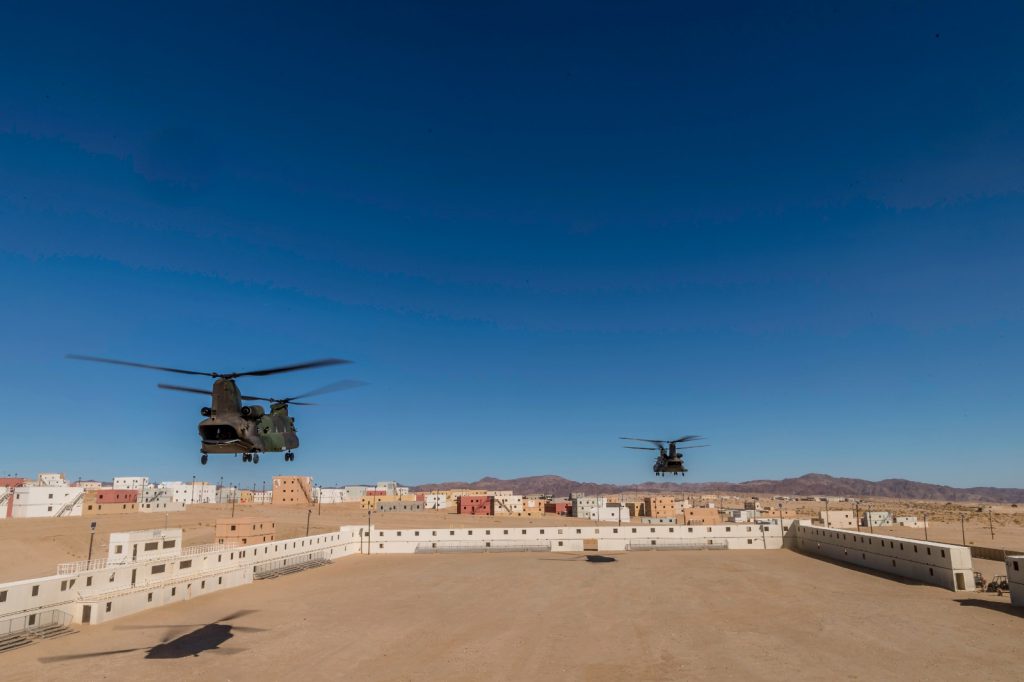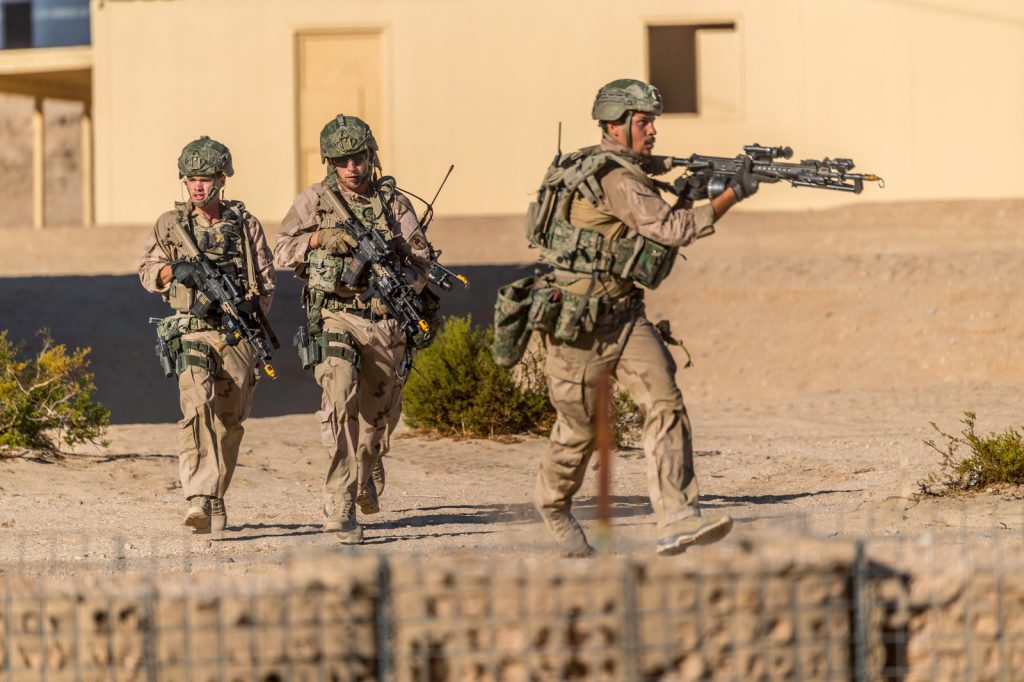
Three years ago, I became a communications adviser for the Dutch Marine Corps. Time has flown since then. I have tackled the branding and have translated the Royal Marines communication strategy into that of the Marine Corps, along with my other responsibilities as a Corps reservist, which include consultation, editorial work and supervision of media teams. All this alongside my fantastic civilian job as owner and founder of Mooi Creatie communications agency. I’d like to take you behind the scenes during one of my trips as liaison of a media team (in the role of editor/director). Our target group gets to see the fantastic images and exciting stories, but the legwork beforehand is equally impressive.
The bigger picture
Before we embark on our travels, I’d like to give you a brief idea of the role played by such trips within the bigger picture. We have formulated a communications strategy for the Corps, which describes the proposition of the Corps. It can be summarised as “Anytime, anywhere and under the most severe conditions”. That is a pledge made by the Corps to the nation of the Netherlands. We are constantly working at fulfilling this proposition, otherwise known as the brand promise. After all, empty promises are of no use to anybody, and only serve to damage credibility. We therefore need to show how we train anywhere in the world regardless of the severity of the conditions.

Preparations actually start as soon as the Operational Annual Plan is published. All the exercises scheduled for the coming year are pencilled in in this ‘agenda’.
On publishing this plan, we selected a particular exercise for reporting purposes. My task is then to collaborate with my colleagues at the Marine Corps Public Affairs office in making a request for a cameraman via the Defence Media Centre. The Corps has two photographers of its own who accompany us whenever possible. We do so because these people may operate independently under extreme circumstances (cold weather, mountainous terrain, et cetera). I can then accompany them. Of course it’s essential that I too have the appropriate gear to be able to function properly under such circumstances.
Once we know who’s part of the team, we all meet to plan the contents of the message. “What do we want to say?” We start by looking carefully at our proposition and determining how best to fulfil it within the context of the exercise. We then also decide what will be published and where. “Which media will we use?”
This time around, our travels took us to the US (United States of America). To Twentynine Palms to be precise (see box). The PAO (Public Affairs Officer) of the unit informed us that we were not to operate unaccompanied during our stay. We would need to contact the STRATCOMM in order to draw up a plan of approach together with them. All images would first need to be authorised by the Americans, before being published. I’m responsible for everyone correctly filling in the DIDOs, so that we can travel as a team. In this case, we also requested a heavy duty off-road vehicle suitable for use in the desert. Just before departure, the final check determines whether all travel documents have been received and all equipment is complete.
Boots on the ground
On arrival in the US, we began by establishing contact with our colleagues at STRATCOMM. We presented our programme and exchanged the latest information. We then became acquainted with the team who would accompany us throughout our stay, and agreed that they would be responsible for radio traffic with Range Control. And then it was time for action. We crammed all the gear into the rental and off we headed.
Week one saw the MWX warfighting exercise. An impressive scenario in which the Americans ‘fight’ the Dutch, British and Canadian troops. During this five-day-long exercise, the Marines defend the city and protect its people against possible attacks. They are faced with militia who are in and around the city, and with civilians who revolt against them.
During our deployment, it’s essential that we have a decent workplace, with reliable lighting, power supply and Internet connection. We shoot footage in the daytime, which is then processed and streamed to the Netherlands during the evenings. I function as the driver during our deployment, and together with our American colleague I’m responsible for navigation. That’s pretty useful in an area as large as the province of Zuid-Holland at home.
Another task is to involve the staff on location in the story behind our proposition. “What are we doing here and why are we here?” I sit in on the daily briefings and regularly talk to the unit commander in order to get a good idea of how the exercise is progressing, from the perspective of the unit. I check the footage we have made and determine whether it can be used in the story we are to tell.
The final task is to ensure that, at the end of the exercise, all the images and photos are eventually sent to the unit, and that all the material is published on the appropriate servers.

Enjoyment
This is a fantastic way of seeing the world. It takes me to places most people can only dream of. It’s hard work and I’m often away from home, but it’s also sheer enjoyment. We often work with a regular team of people, so that a nod is generally as good as a wink. And returning home is the best feeling ever.








